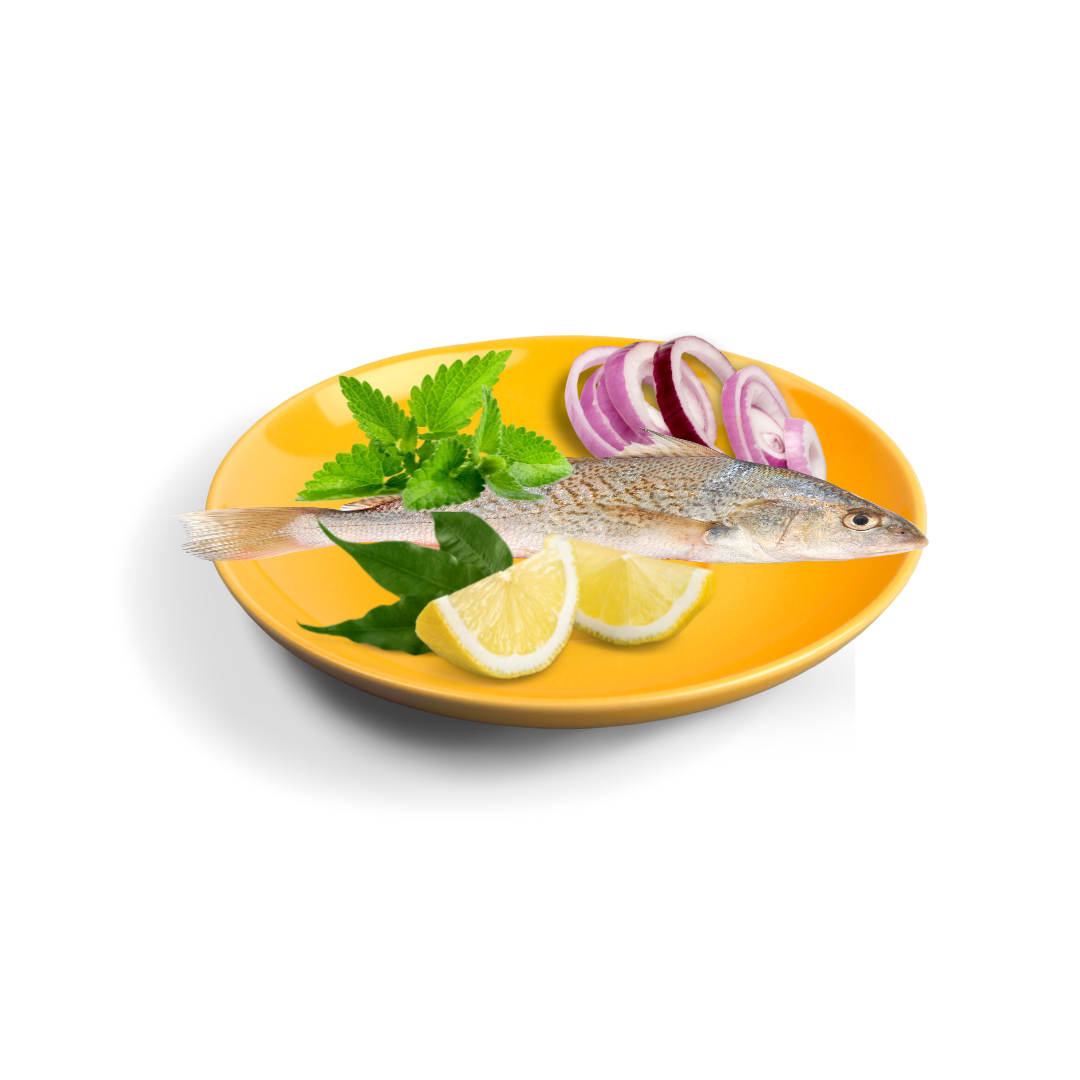- Yellowfin tuna has a torpedo-shaped body, with a dark metallic blue-black color on its back and upper sides, and yellowish-silver color on its lower sides and belly.
- It is a highly migratory species, capable of swimming at high speeds of up to 50 miles per hour.
- Yellowfin tuna is a popular food fish, prized for its firm and flavorful flesh, which can be cooked in various ways, such as grilling, searing, or baking.
- It is also a rich source of various nutrients that offer many health benefits.
Health Benefits of Yellowfin Tuna:
- Rich in protein: Yellowfin tuna is an excellent source of high-quality protein, which is essential for building and repairing tissues, muscles, and bones.
- Omega-3 Fatty Acids: Yellowfin tuna is an excellent source of omega-3 fatty acids, which can help reduce inflammation, improve heart health, and lower the risk of chronic diseases such as cancer, diabetes, and Alzheimer’s disease.
- Vitamin D: Yellowfin tuna is a good source of vitamin D, which is essential for bone health, immune system function, and reducing the risk of diseases such as cancer, diabetes, and heart disease.
- Selenium: Yellowfin tuna is a good source of selenium, an antioxidant mineral that can help protect cells from damage and reduce the risk of chronic diseases such as cancer and heart disease.
- Potassium: Yellowfin tuna is a good source of potassium, an essential mineral that can help regulate blood pressure, improve heart health, and reduce the risk of stroke and kidney disease.
List of Diseases that can be cured:
While no food can cure diseases, consuming yellowfin tuna as part of a balanced and healthy diet may help reduce the risk of chronic diseases such as:
- Heart disease
- Stroke
- Diabetes
- Cancer
Table 1: Macronutrient Content of Yellowfin Tuna per 50g serving
| Nutrient | Amount |
|---|---|
| Calories | 60 |
| Protein | 13g |
| Fat | 1g |
| Carbohydrates | 0g |
| Fiber | 0g |
| Water Content | 35g |
Table 2: Vitamin Content of Yellowfin Tuna per 50g serving
| Vitamin | Amount |
|---|---|
| Vitamin A | 3mcg |
| Vitamin B1 | 0.04mg |
| Vitamin B2 | 0.05mg |
| Vitamin B3 | 2.8mg |
| Vitamin B6 | 0.3mg |
| Vitamin B12 | 1.1mcg |
| Vitamin C | 0mg |
| Vitamin D | 6.4 IU |
| Vitamin E | 0.2mg |
| Vitamin K | 0.1mcg |
| Folate | 1mcg |
| Biotin | 1mcg |
Table 3: Mineral Content of Yellowfin Tuna per 50g serving
| Mineral | Amount |
|---|---|
| Calcium | 2mg |
| Iron | 0.4mg |
| Iodine | 23mcg |
| Zinc | 0.4mg |
| Magnesium | 24mg |
| Phosphorus | 145mg |
| Potassium | 190mg |
What is Yellowfin Tuna, and where is it found?
Yellowfin Tuna is a type of fish that is typically found in warm waters of the Atlantic, Pacific, and Indian Oceans.
Is Yellowfin Tuna a healthy food choice?
Yes, Yellowfin Tuna is a great source of protein and omega-3 fatty acids, which are beneficial for heart health.
How should Yellowfin Tuna be cooked?
Yellowfin Tuna can be cooked in a variety of ways, including grilling, baking, and searing. It is often served rare or medium-rare.
What dishes can be made with Yellowfin Tuna?
Yellowfin Tuna is a versatile fish that can be used in a variety of dishes, including sushi, poke bowls, salads, and sandwiches.
What is the nutritional value of Yellowfin Tuna?
Yellowfin Tuna is a rich source of protein, omega-3 fatty acids, vitamins B12 and D, and minerals like selenium and magnesium.
Is Yellowfin Tuna sustainably sourced?
Yellowfin Tuna is a popular fish that is caught both commercially and recreationally, and sustainability varies depending on the source.
Can Yellowfin Tuna be frozen?
Yes, Yellowfin Tuna can be frozen for up to three months.
What is the difference between Yellowfin Tuna and other types of Tuna?
Yellowfin Tuna has a mild flavor and is typically less fatty than other types of Tuna, such as Bluefin Tuna.
What are the health benefits of eating Yellowfin Tuna?
Yellowfin Tuna is a great source of protein and omega-3 fatty acids, which are beneficial for heart health and can help lower cholesterol levels.
What are some popular recipes that feature Yellowfin Tuna?
Some popular recipes that feature Yellowfin Tuna include Tuna Poke Bowls, Grilled Tuna Steaks, and Tuna Salad.
Can Yellowfin Tuna be eaten raw?
Yes, Yellowfin Tuna is often served raw in dishes like sushi and sashimi.
How can I tell if Yellowfin Tuna is fresh?
Fresh Yellowfin Tuna should have firm flesh, a bright color, and a mild smell.
What is the recommended serving size for Yellowfin Tuna?
The recommended serving size for Yellowfin Tuna is 3-4 ounces.
Is Yellowfin Tuna a good source of omega-3 fatty acids?
Yes, Yellowfin Tuna is a great source of omega-3 fatty acids, which are important for heart health and brain function.
What is the best way to store Yellowfin Tuna?
Yellowfin Tuna should be stored in the refrigerator or freezer to keep it fresh.
Can Yellowfin Tuna be grilled?
Yes, Yellowfin Tuna can be grilled, and it is a popular way to cook this type of fish.
How can I prepare Yellowfin Tuna for cooking?
Yellowfin Tuna should be rinsed and patted dry before cooking, and any bones or skin should be removed.
Is Yellowfin Tuna a good source of vitamin D?
Yes, Yellowfin Tuna is a good source of vitamin D, which is important for bone health and immune function.








